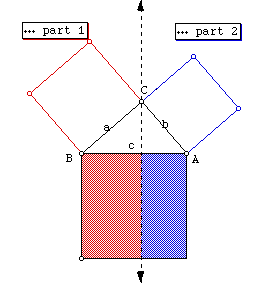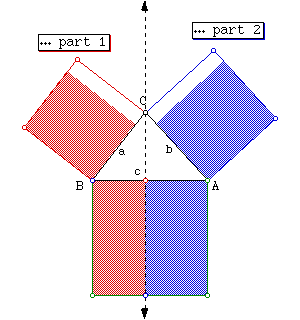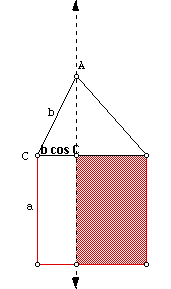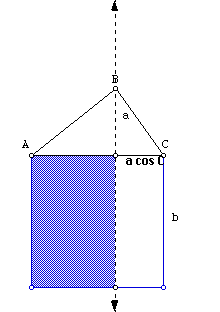
First consider the Pythagorean theorem:
Given a right triangle, then the square of the side opposite of the right angle is equal to sum of the squares of the other sides.
The following demonstration is based on Euclid's proof.

An interesting fact about Euclid's proof, as opposed to the proof using similar triangles, is that Euclid's proof shows that areas of the little squares add up to the areas of the big square. The proof using similar requires the existence of square root, which can be irrational. Euclid's proof does not need square roots.
Now what happens when the same demonstration is attempted on an arbitrary triangle.

In this case the two rectangles do not fill up the corresponding squares, meaning the sum of the squares of the two smaller sides is greater than the larger side squared. But how much larger?

So we need to find the area of the white rectangle which is
(a)(b cos C).
Strangely enough the white rectangle in the other square is also
(a)(b cos C).

So,

or the law of cosines.